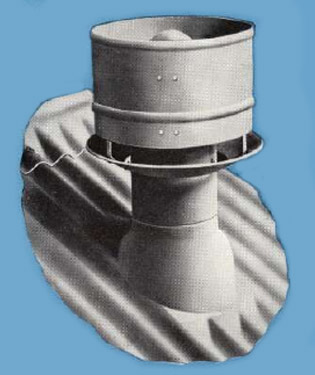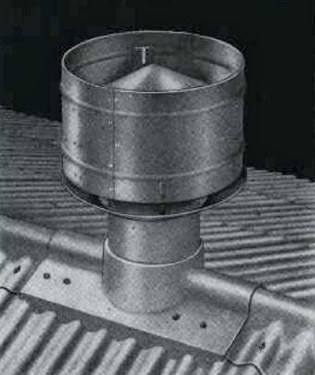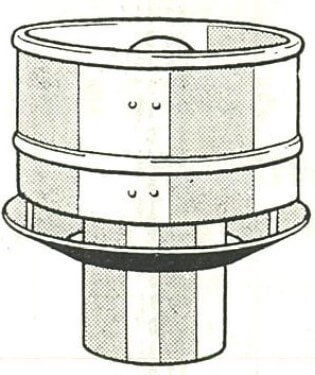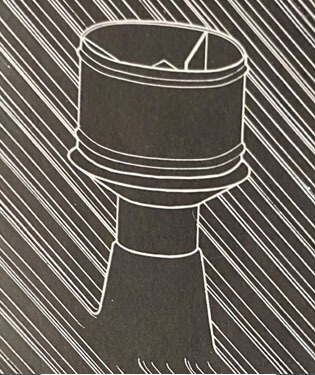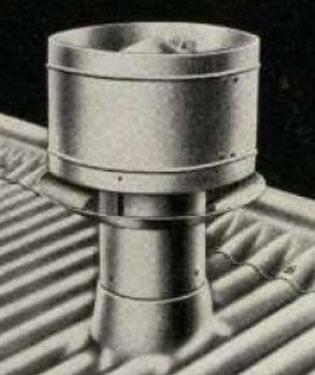Home / A summary of ACM production in Australia
A summary of ACM production in Australia
Asbestos products were imported for sale and use in Australia from the late 1800s, with Australian manufacturing of asbestos containing material (ACM) commencing in the early 1900s, and the significant manufacture of building products around 1917, which ceased in the 1980s. Imported asbestos products were sold in Australia throughout this period, but Australian manufactured asbestos cement (AC) products dominated the local market. Bulk raw asbestos fibres were imported and locally sourced, to meet the demands of this production.
The main Australian manufacturers of asbestos products for the following 70 years included:
- Asbestos Products Ltd (1934-1944)
- Correbestos, Fibrobestos, Artbestos, Artyle and Armac.
- Wunderlich Ltd
- Durabestos, Duratile, Duradec, Durawall, Duralux, Durachrome, Duracast, Duraveneer, Log Cabin, Ribwall, Wunderplank, Weatherboard, Wunderflex, Villaboard, Millboard, Chamferboard, Lineboard, Insulabestos, Bevelux
- James Hardie Industries Ltd/James Hardie and Coy Pty Ltd/Hardie-Ferodo Pty Ltd (Hardie’s)
- Fibro, Fibro-Cement, Fibrolite, Super-Six, Standard, Tilux, Endurite, New Tilux, Velotile, Hardiplank (smooth and woodgrain), Hardibord, Hardigrain, Hardiline, Hardiflex, Versilux, Asbestolux, Shingleplank, Weatherboard, Montana, Stucco, Log Cabin, Villaboard, Shadowline, Highline, Coverline, Chamferboard, Fluted, Striated (Striated Hardiflex), Compressed sheets, Multi-notched shingles, Supertite, K-Lite, Millboard, 85% Magnesia, Caposite, High Temperature blocks and sections, Super High Temperature (Super HT) blocks and sections and plastic composition, F.R.Board, Fibrolux, Dilex, Hardibestos, Five Star.
- Fibrocene (marketed under licence by Queensland Pastoral Supplies)
- Supplied AC structural components to building kits for Logan Modular Homes and Trojan Home-Pak.
- Goliath Portland Cement Co Ltd
- Tasbestos, Flexboard, Trojan tiles, Tasbestile, Shadowall, Plankton, Fluted panel, Rustic sheet.
- The Colonial Sugar Refining Co Ltd (CSR)
- Fibrock, De Luxe Fibrock, Ruberoid, Vinylflex, Master Seven (M7), Bevelux, Fibrobestos – also traded under the name: Asbestos Products Pty Ltd
- Asbestolite Pty Ltd (1941-1956)
- Asbestolite
Of these, three companies dominated the ACM supply in the post Second World War construction boom in Australia: Hardie and Wunderlich, who were both present at the beginning of local manufacturing, and CSR, whose AC production grew rapidly in the 1950s-60s, lasting until 1977. These three partnered in production and marketing both in Australia and internationally through the South Pacific.
Asbestos was used in the manufacture of over 3,000 branded products. Most of these were moulded AC, used extensively in the construction of residential homes as well as commercial, community and industrial structures. They were attractively marketed to the homeowner as affordable, easy to use and requiring minimal to no maintenance throughout their lifespan. The positive purchasing qualities were offset by the poor heat and acoustic insulation qualities of AC sheeting.
AC products were made with Portland cement slurry and the disintegrated asbestos fibres, which acted as a binder providing tensile reinforcement. It was then placed into mould dies to achieve the relevant shape, which when finished, was cured and dried. In the 1950s, the addition of ground silica was included to the formula for sheeting and autoclaving was introduced at the end of the process, to achieve a longer lasting product. In the latter period of production, some Hardie’s sheeting products (Hardiflex initially) also contained cellulose fibre in the mix.
The modern fibre cement board, a non-ACM material often made with cellulose, is known in the building industry worldwide for its versatility, performance and use in both interior and exterior applications. Casual observation, however, cannot usually distinguish the difference between the ACM and non-ACM products when installed. Today, the term ‘Fibro’ is being used to describe and market the modern fibre cement board, whereas, for many Australians, ‘Fibro’ is part of our vernacular to describe AC sheeting on many homes, garages and sheds. The use of this term should be clarified when describing older built structures.
All Australian manufacturers produced near identical ranges of AC product, some with the same product names. Corrugated AC sheets and associated components were the core of the AC product and remained in demand for most of the 70 years. Although competition was paramount, the marketing relationships, duplication of product, product names across brands and joint supply to large contracts by Australian manufacturers could almost be described as symbiotic. For example, in 1941 joint ownership was established by Hardie and Wunderlich for product made in South Australia under the brand name Asbestolite. This was necessitated by wartime difficulties with the transport of supplies into the South Australian market. This brand name originated with the Spriggs Asbestolite Co, which had sold a range of imported AC products from around 1914 until they ceased trading in 1930. In 1956 Hardie acquired Wunderlich’s shareholding, after which the Asbestolite brand was phased out by 1961.
In 1964 James Hardie, Bradford Insulation Industries and CSR entered a partnership to produce and supply industrial thermal insulation materials, manufactured with chrysotile asbestos, South African amosite asbestos and crocidolite asbestos supplied from the CSR Wittenoom mine. Wittenoom closed in November 1966 but had supplied thousands of tons of crocidolite to ACM production in Australia. The Hardies-Bradford venture continued until 1974.
A large proportion of the AC items produced were identical in structural specification which afforded the customer interoperability of different brands. Commercially, it also allowed production lines to be easily adapted when one manufacturer acquired the infrastructure of another.
Catalogue images for AC roof exhaust ventilators
In 1969 CSR acquired the Wunderlich AC production infrastructure but kept the Wunderlich brand name alive. Marketing in the South Pacific was undertaken with the appearance of a CSR-Wunderlich joint venture. In 1977 Hardie acquired the Wunderlich AC division from CSR and became the sole manufacturer of AC product until it’s finality in the mid-1980s.
When Hardie ceased using asbestos in building products in the mid-1980s, asbestos was not yet comprehensively banned from use in Australia. References in this guide to years of production/use as ‘prior to 1990’ accounts for pre-supplied stock released into the market before the cease.
The Australian use of asbestos in friction materials for brakes and gasket sheeting continued until it was phased out before the national ban and complementing import prohibition became law, on 31 December 2003.
Hardie’s began developing asbestos-alternative products in the 1960s, using materials such as cellulose as a binder. The market names of some asbestos products, particularly fibre-cement sheeting and bituminous paints, were retained by different manufacturers although they are now made with asbestos-alternative materials.
As a fibrous raw material, asbestos was also woven into rope, textile wrap, cloth and protective clothing. It was mixed into plasticised form and used for insulation on hot pressure pipes and around furnaces, boilers as well as other industrial plant and machinery. It was spray coated onto structures for fireproofing and to prevent condensation. In addition to its insulating qualities, it was a stable binding material, used in asphalt and bituminous compounds, dampcourses and coatings for layered roofing felts, vinyl and asphalt flooring for industrial and household interiors, paints and in repair sealants and caulking sold to the average consumer.
Some products, particularly insulation and bituminous materials, were produced and sold in Australia by local companies under licence from the original overseas owners. The names of these actual products were often the same as that sold overseas, or under a local brand name. Imported products marketed in Australia are referenced in relation to the overseas manufacturer and/or brand name.
ACM were used extensively across a wide range of industry, trades and government services, including but not limited to: building/construction, railways, electrical and power station infrastructure, fire protection, Defence Forces, telecommunications, boiler making, plumbing, water and sewerage infrastructure, agriculture, automotive, plant and machinery, shipbuilding, carpentry, flooring, lagging and other insulation, and the sheet metal industry.
